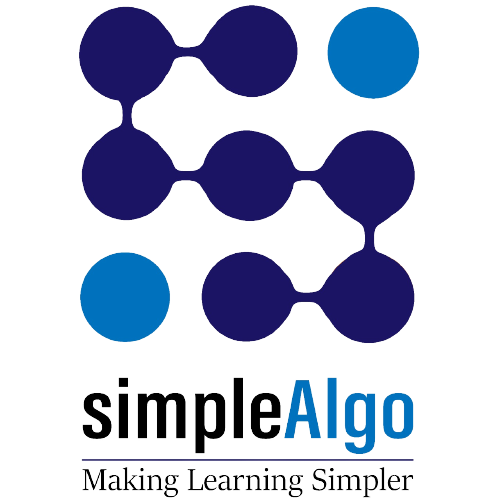Step by step guide to learn python from scratch
Learning Python from scratch is an excellent choice, especially if you’re new to programming. Python is known for its readability and simplicity, making it a great language for beginners. Here’s a step-by-step guide from simplealgo to help you get started with Python:
Next Steps in Your Python Learning Journey
- Install Python:
First, download and install Python from the official website (https://www.python.org/downloads/). Choose the latest stable version for your operating system.
- Code Editor/IDE (Integrated Development Environment):
Choose a code editor or an integrated development environment (IDE) to write and run your Python code. Some popular options include Visual Studio Code, PyCharm, Jupyter Notebook, and IDLE (comes with Python installation).
- Learn Basic Syntax:
Familiarize yourself with Python’s basic syntax. Learn about variables, data types (integers, floats, strings, lists, dictionaries, etc.), and basic operations.

- Control Structures:
Study control structures like if statements, for loops, and while loops to control the flow of your programs.
- Functions:
Understand how to define and use functions. Functions are reusable blocks of code that help organize your program.
- Data Structures:
Explore more complex data structures like lists, tuples, sets, and dictionaries. Learn how to manipulate and iterate through them.
- Input and Output:
Learn how to get input from users and display output using functions like input() and print().
- Exception Handling:
Understand how to handle errors and exceptions using try-except blocks.
- File Handling:
Learn how to read from and write to files using built-in file handling functions.
- Object-Oriented Programming (OOP):
– Get introduced to the concepts of OOP in Python, including classes, objects, inheritance, and polymorphism.
- Libraries and Modules:
– Python has a vast standard library. Learn how to import and use modules to extend Python’s functionality. For example, the math module for mathematical operations.
- Practice Coding:
– Practice is essential. Start with simple exercises and gradually work your way up to more complex problems. Websites like LeetCode, Codecademy, and HackerRank offer Python exercises and challenges.
- Build Projects:
– Once you’re comfortable with the basics, start building small projects. It could be a calculator, a to-do list app, or a simple game. Projects help you apply your knowledge.
- Online Resources:
– Take advantage of online tutorials, courses, and forums and simplealgo.com is one of the best option to learn python from scratch.
- Books:
– Consider reading Python books for more in-depth knowledge. Recommended books for beginners include “Python Crash Course” by Eric Matthes and “Automate the Boring Stuff with Python” by Al Sweigart.
- Collaborate and Learn:
– Join coding communities, forums, and social media groups related to Python. You can learn from others, ask questions, and share your knowledge.
- Personal Projects:
– As you become more proficient, work on personal projects that interest you. This hands-on experience is invaluable for your learning journey.
- Keep Learning:
– Python is a vast language, and there’s always something new to learn. Keep exploring more advanced topics like web development, data science, machine learning, and automation as your skills progress.
- Documentation:
– Get comfortable with reading and understanding Python documentation. It’s an essential skill for any programmer.
- Stay Informed:
– Subscribe to Python-related newsletters, blogs, and YouTube channels like “simplealgo” to stay updated with the latest developments in the Python ecosystem.
Good luck on your Python learning journey!
